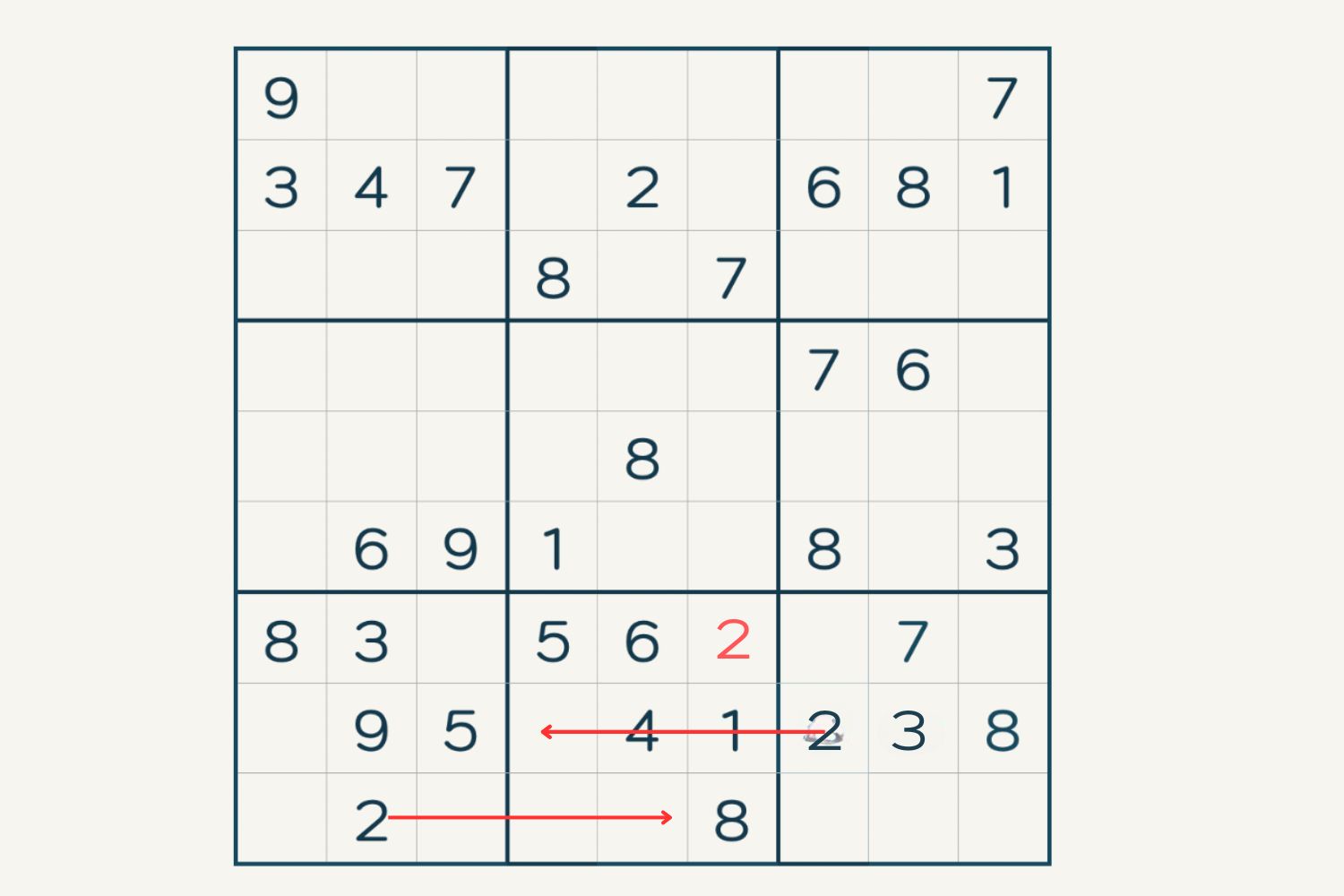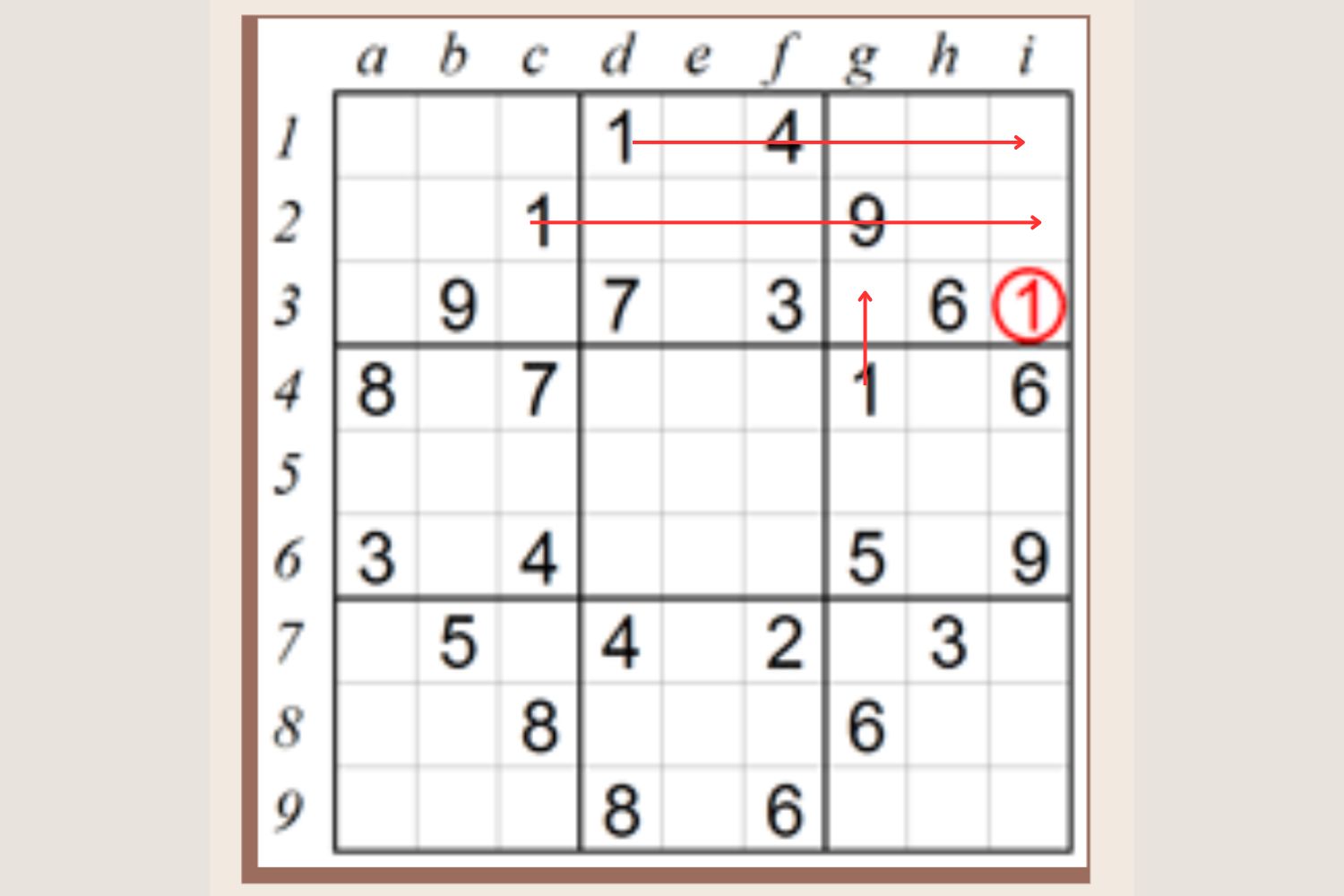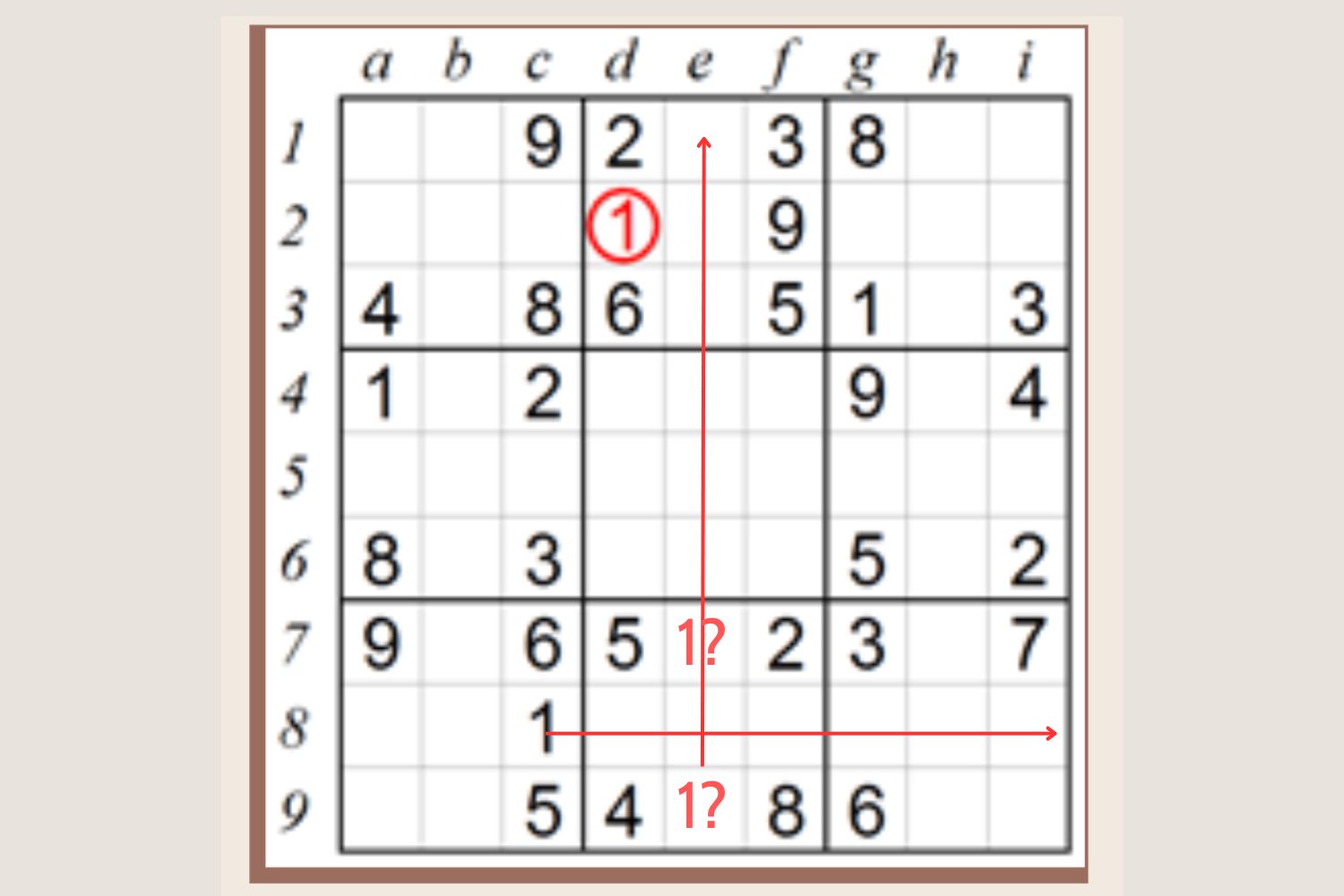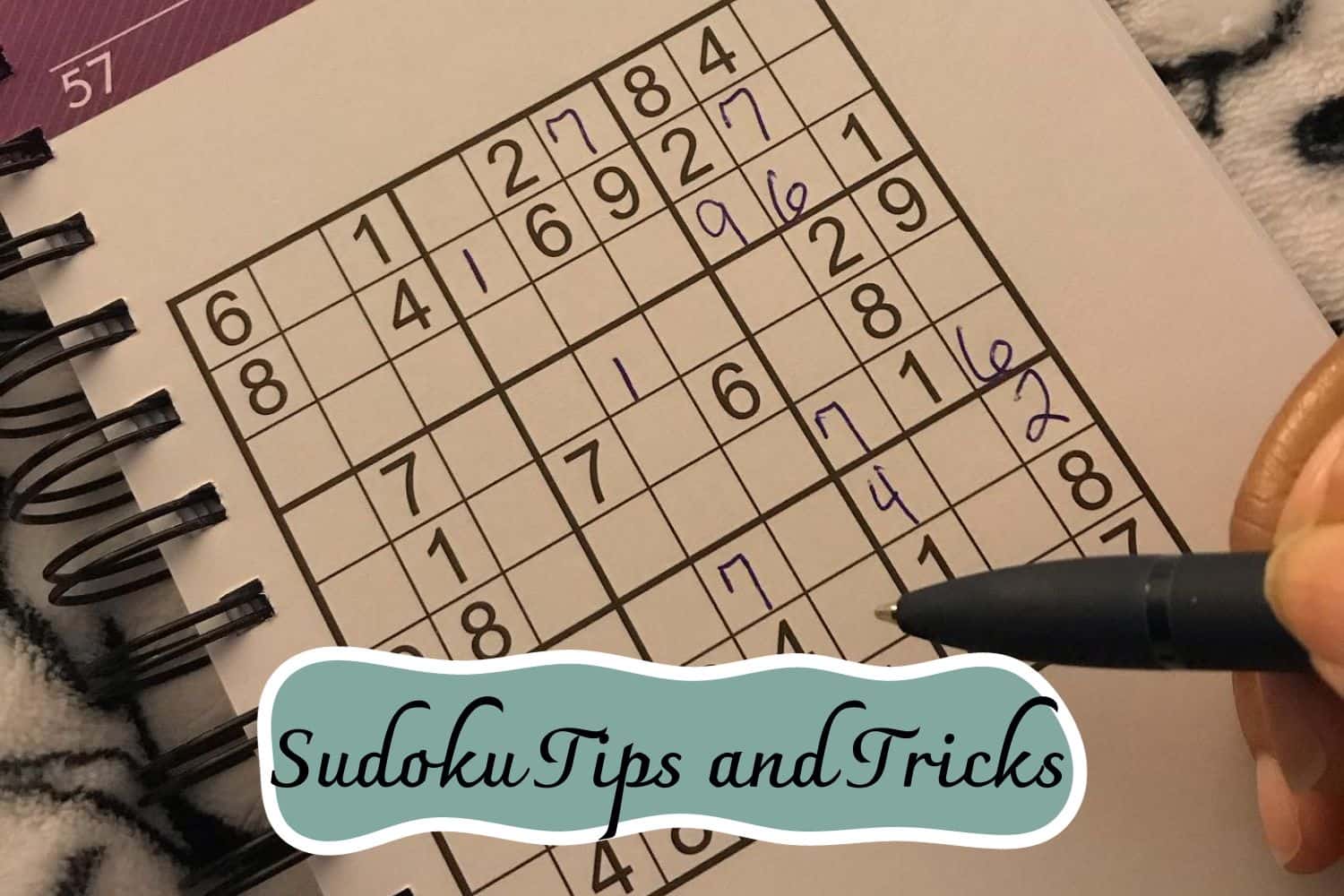Unravel the mysteries of the number jigsaw puzzle with these sudoku tips and tricks! Learn how to quickly complete any sudoku grid, no matter your level.
Sudoku Tips and Tricks | Master the Puzzle Quickly
Are you looking for an enjoyable challenge? If so, Sudoku is the perfect pastime to sharpen your mind and raise the stakes of a classic game.
It’s a game that requires patience, precision, and lateral thinking which can give you an almost meditative state when solving problems.
In this blog post, we will provide some useful Sudoku tips and tricks, whether you are just starting or want to take your skills to the next level! So let’s get started!
Introduction to Sudoku
Discover the captivating world of Sudoku – a challenging game that combines logic and trial and error. Developed in 1979 by Howard Garns, this addictive puzzle has taken the world by storm since 2005. But Sudoku is more than just a game; it delves into fascinating mathematical concepts like combinatorics, group theory, and computational complexity.
The Sudoku phenomenon began in 1984 when Japanese inventor Maki Kaji introduced it in his puzzle company’s magazine. Renamed Sudoku, meaning “Single Numbers,” it caused a frenzy in Japan. New Zealander Wayne Gould then brought it to worldwide attention by having puzzles printed in The Times newspaper in London. England quickly caught Sudoku fever, and in 2005, the U.S. finally embraced this addictive puzzle game.
So, what is Sudoku exactly? It’s a 9×9 grid consisting of 81 cells, divided into nine 3×3 blocks. Some cells already contain numbers, known as givens, while the goal is to fill in the empty cells with the numbers 1 to 9. The challenge lies in ensuring that each row, column, and block contains every number exactly once, following the One Rule. This rule provides an engaging challenge that keeps enthusiasts coming back for more.
But Sudoku doesn’t stop there. It comes in different levels of difficulty and sizes, with grids as large as 16×16. Whether you’re a beginner or an expert, the goal remains the same – solve the puzzle using logic and reasoning to achieve a complete grid.
Join millions of Sudoku enthusiasts worldwide and embark on this captivating puzzle journey. Challenge your mind, immerse yourself in the world of math, and become a Sudoku master today.
Rules of Sudoku Game
Discover the rules that will guide you toward becoming a skilled Sudoku solver. This challenging yet enjoyable puzzle requires logical thinking and attention to detail.
Rule #1: Unique numbers in each row
Imagine a 9×9 grid where rows run from left to right. Your objective is to place the numbers 1-9 in each row’s empty cells, ensuring that no number is repeated.
Rule #2: Unique numbers in each column
Similar to rows, columns are key. Fill each column with the numbers 1-9, making sure that no duplicates exist.
Rule #3: Unique numbers in each 3×3 box
Focus on the smaller 3×3 subregions known as “boxes.” Each box must contain the numbers 1-9 without repeating any number. Mastering these three rules guarantees a unique solution for every row, column, and box.
By embracing these vital rules, you’ll effortlessly solve Sudoku puzzles and experience the satisfaction that comes with it. No need to worry about diagonal lines, as the two 9-cell diagonals do not require the numbers 1-9 to be present. With logical thinking and attention to detail, you’ll successfully solve any Sudoku puzzle and enjoy the sense of accomplishment that comes with completing it.
Sudoku Tips and Tricks
1) Get Started with Sudoku Solving
Starting a Sudoku puzzle can be overwhelming for beginners. Not knowing where to place the first digit is a common challenge. However, there are strategies to make it easier.
One tip is to identify rows, columns, or 3×3 blocks with more given digits. These areas provide constraints for the empty cells in the same row, column, or block. Consequently, there are fewer possibilities for the values in these cells compared to others.
Additionally, pay attention to the frequency of numbers among the given digits. Placing a digit that appears more frequently, like a 9 in a puzzle with five given 9s and no 2s, is typically easier than placing a less common digit.
By applying these techniques, you can confidently begin solving Sudoku puzzles.
2) Efficient Scanning Techniques to Solve Sudoku Puzzles
When faced with a Sudoku puzzle, one of the simplest and most effective strategies is to employ scanning techniques. By carefully examining rows and columns within each triple-box region, you can quickly eliminate numbers or squares that don’t fit and identify situations where only one number can occupy a particular square. This approach allows you to solve easy puzzles to the end.
Even in more challenging scenarios, the scanning technique remains invaluable. It can help make significant progress in harder puzzles before more advanced solving techniques become necessary. Here are some ways you can utilize scanning techniques effectively:
Enhance your Sudoku-solving skills with these powerful scanning techniques.
Scanning in one direction:
In this example, we will concentrate on box 8 in Sudoku, where every box must have the number 2. By observing box 7 and box 9, we can determine that there are already 2s in row 8 and row 9. Consequently, the two bottom rows of box 8 cannot have a 2. This narrows down the possible placement of the number 2 to square row 7 collum 6.

Scanning in two directions:
In the realm of solving puzzles, there is a powerful technique that goes beyond conventional thinking. By leveraging information from both perpendicular rows and columns, we can further enhance our approach.
Let’s take a closer look at an example where we need to determine the placement of the number 1 in box 3. We observe that rows 1 and 2 already have 1s, leaving two empty squares at the bottom of box 3.
However, it’s important to note that square g4 also contains a 1. This means that we cannot add another 1 in column g. Consequently, the only remaining option for placing the number 1 is in square i3.
By employing this innovative scanning technique, we can optimize our strategy for solving puzzles by making informed decisions based on multiple dimensions.

Finding Single Candidates: Identifying the Best Fit
To solve Sudoku puzzles successfully, it is crucial to begin by identifying cells that can only hold one digit. Even in beginner puzzles, you can usually find one or two of these cells hidden somewhere, providing a simple starting point for making progress.
Thomas Snyder, a world-renowned champion of the World Sudoku Championship, advises beginners to approach the grid by considering how to interpret the information it presents logically. Start by examining the bold lines that separate groups of three rows or columns. Look for any numbers that appear twice within these lines. Then, attempt to place the third instance of that number, shifting your focus to the remaining space in the opposite direction (for example, if you’ve been observing a row, now examine a column) to find its correct position. According to Mr. Snyder, this method allows you to concentrate on the digits that occur most frequently, which are often the easiest ones to solve.
As you become more familiar with this way of thinking, you can further analyze the grid’s geometry. By practicing pattern recognition, you may start to identify boxes with already filled seven or eight numbers, or rows with six completed digits. These patterns will enhance your problem-solving efficiency.
Let your Sudoku mastery unfold as you embrace these techniques and uncover the secrets of the puzzle grid. Your solving prowess will undoubtedly skyrocket as you tackle even the toughest Sudoku challenges.
Simplifying Sudoku Strategies: The Power of Elimination
Experience a more advanced approach to solving Sudoku puzzles through the process of elimination. Let’s consider an example where the number 1 is located in square c8. As a result, either square e7 or square e9 must also contain a 1.
However, this means that the 1 in column e belongs to box 8, making it impossible for 1 to appear in the center column of box 2. Ultimately, the only suitable square for 1 in box 2 is square d2. Master the art of elimination to conquer even the most challenging Sudoku puzzles.

Discovering Missing Numbers in Rows and Columns:
This technique proves especially valuable when rows (and columns) are nearly finished. Consider row 6 as an example. Out of the nine squares, seven consist of the numbers 1, 2, 3, 4, 5, 8, and 9, indicating that 6 and 7 are absent.
Nevertheless, square h6 cannot hold the number 6 due to its presence in the same column. Consequently, the missing 6 must occupy square b6.

3) Analyzing Techniques
As Sudoku puzzles become more challenging, basic scanning methods may not suffice. To conquer harder puzzles, a deeper level of logical analysis is necessary. This is where the method of pencilmarking comes into play.
By systematically adding small numbers inside the squares, players can determine which numbers could potentially fit. After pencilmarking, the next step is to carefully analyze the results, identify unique number combinations, and deduce the correct placement for each number.
Here are some effective strategies for utilizing advanced analyzing techniques in Sudoku solving.
Naked Pairs: Eliminating Squares
The Naked Pairs Strategy is a powerful tool for solving Sudoku puzzles. By analyzing the puzzle, you can determine the only possible numbers for a specific cell. This strategy, similar to the process of elimination, helps you narrow down the options.
When you come across a naked pair, you have two possible numbers that can be used in that cell, but it’s unclear which one goes where. By identifying the naked pair, you can eliminate those numbers as options in other rows, columns, or squares.
Then, through deduction, you can figure out which number makes the most sense based on its surroundings.
Take, for example, a naked pair featuring a two and a six. You’ll need to scan the puzzle to see where these digits are already present, all while keeping in mind that repetition is a no-no.
It’s worth noting that naked pairs don’t have to line up neatly on the grid. They can be scattered throughout the square, adding to the challenge.
Unlock the potential of the Naked Pairs Strategy and watch as your Sudoku skills reach new heights. Don’t let complex puzzles hold you back – take control and conquer them with ease.
Hidden Pairs: An Effective Strategy for Eliminating Squares
Are you looking to take your Sudoku game to the next level? Look no further! In this blog post, we will explore the highly effective hidden pair strategy that will revolutionize the way you approach solving Sudoku puzzles.
What is the hidden pair strategy, you may ask? It’s a technique that allows you to uncover hidden patterns and strategically place numbers in your Sudoku grid.
By identifying clusters of numbers in two cells, you can eliminate other number options, simplifying your choices for the remaining cells. This strategy serves as a fundamental technique for advanced gameplay.
To implement this strategy, start by carefully examining the numbers already filled in your Sudoku grid. Then, meticulously scan the columns, rows, and squares, eliminating those numbers as possibilities for other cells.
This process will ultimately reveal a clear pair of number options that will give you an advantage in dominating the game.
Let’s take a look at an example to better understand how the hidden pair strategy works. Initially, the hidden pair may seem overwhelming with several number possibilities.
However, by diligently following the rule of scrutinizing columns and rows, you’ll discover that the true value of those particular cells can only be 6 or 7. Through the hidden pairs strategy, you will successfully eliminate all other options, leading you closer to victory.
While the hidden pair strategy can also be applied to triplets or quads, mastering these techniques may require more practice and experience. It is highly advisable to start by honing your skills with pairs and gradually progress to more complex scenarios.
With time and dedication, you will be able to open up your Sudoku grid to new possibilities and use the hidden pairs strategy to dominate the game.
So what are you waiting for? Get ready to enhance your Sudoku-solving skills with the hidden pair strategy. Prepare to conquer any puzzle that comes your way and experience the thrill of mastering this game-changing technique.
X-Wing Strategy
When it comes to solving Sudoku puzzles, the X-Wing Strategy is a technique that can revolutionize your approach.
Instead of focusing on individual squares, this strategy directs your attention to parallel rows and columns, enabling you to eliminate possibilities and swiftly clear the board of those pesky pencil marks.
To put it simply, the X-Wing Strategy encourages you to leave behind the conventional approach and embrace a new perspective. By identifying pencil marks that appear in the same two spots across two different rows, you can create an X formation that holds the key to cracking the puzzle.
Let’s take a closer look at an illustrative example. As you can see, the parallel rows generate an X shape, which serves as the inspiration behind this game-changing strategy.
Now, with this realization, you’ll notice that each row within the X formation must contain a 4. The only valid options are the dark blue and light blue slots, as placing the 4 anywhere else would violate the rules of Sudoku.
But the X-Wing Strategy doesn’t stop there. Once you establish the X formation, it’s time to step back and evaluate the entire grid.
Look for instances of repeated numbers, as they will provide valuable guidance for making the right moves. Erase any unwanted numbers and confidently place the X formation numeral in its designated cell.
Mastering the X-Wing Strategy calls for patience and practice, but the rewards are well worth the effort. This technique isn’t for the faint of heart, but if you’re eager to elevate your Sudoku skills, it’s an absolute game-changer.
So bid farewell to fixating on individual squares and rows/columns, and say hello to a broader perspective. Embrace the bigger picture, and conquer Sudoku like a true professional.
4) Avoid excessive fixation on one section
Efficient scanning involves not spending excessive time examining a single part of the grid.
If you find yourself doing this, it is likely because the specific area you are concentrating on requires you to fill in digits in other sections before it can be solved.
Therefore, it is crucial to learn how to shift your attention across the grid to determine which area can be worked on initially. This allows you to return to the more challenging sections later on.
5) Maintain Your Momentum
Sudoku is a puzzle that relies on the power of momentum. As you navigate through the grid, you’ll discover that some areas require you to strategically place digits in other cells before finding a solution.
Once you start filling in digits, a wondrous cascade effect occurs. The empty cells seem to solve themselves, one after another.
To keep the wheels turning smoothly, it’s crucial to scan each row, column, and 3×3 block whenever you add a new digit. This vigilant approach could unlock a series of new possibilities.
Get ready to embrace the thrill of momentum and conquer Sudoku like never before.
6) Don’t guess: Embrace the power of the process of elimination.
Eliminate the need for guesswork and confidently solve any Sudoku puzzle. By approaching each challenge logically and with patience, you’ll uncover the unique solution effortlessly. Remember to refer back to the valuable hints and tips we’ve provided to elevate your problem-solving skills.
7) Continuously Assess the Grid for Optimal Placement
When adding a new number, take the opportunity to identify potential open rows or boxes. This can help narrow down possibilities and reveal other obvious numbers. By consistently seeking the missing numbers in a line or grid, you can expedite the solving process.
8) Patience and Delight: Embrace the Journey
While your aim may be to complete a puzzle, don’t forget to savor the journey and stimulate your mind as you unwind. If frustration creeps in, take a break. Give your mind a chance to reset and attempt again when you’re ready. Above all, prioritize enjoyment and make the most of the experience.
Unlock the Secrets of Sudoku: Strategies for Breaking Through and Solving with Ease
If you’ve ever been stumped while trying to crack a challenging Sudoku puzzle, don’t worry – it happens to the best of us. But fear not, because we have the ultimate guide to help you overcome those obstacles and experience that gratifying “aha” moment.
Solving a Sudoku requires a unique approach compared to other puzzles like crosswords or Spelling Bee. It’s not just about the numbers – it’s about spotting the right patterns and avoiding misdirections. Even if you don’t get stuck on a single digit, you may still struggle to see the bigger picture or get led astray by false patterns.
But here’s a pro tip: when you’re feeling stuck, take a breather. Give your brain a chance to reset and gain a fresh perspective. Whether it’s a quick stroll around the house or a soothing cup of tea, stepping away for a moment can uncover new insights and get you back in the game.
Renowned Sudoku enthusiast, Ms. Mcleod, swears by a simple mantra when faced with tough decisions: “A valid Sudoku is only allowed to have one solution.” By applying this principle, she eliminates placements that could lead to multiple possible solutions, making progress much smoother.
Remember, Sudoku is all about recognizing patterns. The more puzzles you solve, the more your pattern recognition skills will improve. So whether you’re aiming for lightning-fast solving times or simply seeking a relaxing pastime, these tips will undoubtedly help you achieve your solving goals.
Unleash your inner Sudoku master and conquer every puzzle with confidence. Get ready to transform your solving skills and become the ultimate Sudoku aficionado.
Conclusion
With the 8 tips and tricks we have just discussed, you should now be armed with all the skills necessary to approach your next sudoku puzzle with confidence. Don’t be intimidated by the grid – breaking it down into smaller components can make the challenge more manageable.
The more puzzles you solve, the easier they will become as you create mental shortcuts for yourself. Beginners looking to tackle their first puzzle should treat it as an adventure, pushing forward without frustration while celebrating every small victory along the way.
Above all else, have fun with it! Sudoku isn’t meant to be a chore – enjoy discovering patterns and unique solutions each time you sit down to play. Who knows, maybe one day you can proudly add ‘sudoku master’ to your list of skills! Good luck and happy sudoku-ing!
Thanks for reading our article Sudoku Tips and Tricks. If you want to know more information, visit our website here.
Read more:
7 Mastering Solving Sudoku Strategies

